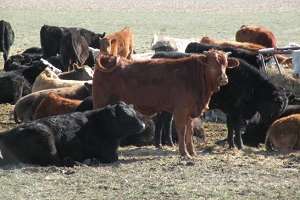By Dr. Derrell Peel

After a recent bounce back in slaughter cattle prices and a good start to the week with feeder cattle, OSU Extension Livestock Market Economist Dr. Derrell Peel tells Farm Director Ron Hays he is hopeful that we’ve put in a near term low after several weeks on the downtrend for yearling and calf prices.
“Fall is a tough time of the year to put together a strong rally,” Peel said, citing several factors including volatility being driven from an erratic futures trade. “At the same time, when you look at potential for fall grazing conditions, winter wheat grazing conditions - I think there’s a fair chance of seeing some significantly increased demand for these stocker cattle.”
He says that would in effect pull feeder cattle prices up a little bit at least over the next month.
Dr. peel has been studying current price relationships and trends in the market and from what he can tell, the market is signaling producers to buy stockers. He says the bottom line is feedlots are demanding heavier cattle right now. Comparing what feedlots are paying for lightweight feeder cattle to feedlots’ cost of gain, there is a suggestion of some money to be made here.
Click here to see more...